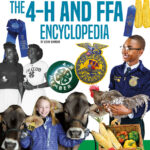Animal abuse and cruelty represent a profound violation of ethical and moral principles that many societies uphold. Despite the growing awareness and discussion surrounding this critical issue, the distinction between animal abuse and neglect often remains blurred in the general consciousness. By dissecting each facet, we can foster a deeper understanding of the inherent cruelty animals endure and inspire a collective shift in perspective.
At its core, animal abuse encompasses any intentional act of harm or mistreatment directed toward an animal. This includes physical, emotional, and sexual abuse. The motivations behind such cruelty can stem from various sources: sociopathic tendencies, cultural beliefs, or even a misguided notion of power. The manifestation of this violence can take numerous forms, from direct aggression—such as beating or torturing—to malicious neglect, where an animal’s fundamental needs for food, water, and shelter are conspicuously unmet.
One crucial aspect that needs elucidation is the difference between active abuse and passive neglect. While abuse involves an overt action intended to cause pain or suffering, neglect often arises from indifference or ignorance. For example, a malnourished dog living in squalor may be the result of a lack of awareness about proper animal care, rather than outright malevolence. Nevertheless, both scenarios culminate in tremendous suffering for the animal involved, and both warrant scrutiny and rectification.
The consequences of animal abuse are far-reaching, extending beyond the immediate physical and psychological trauma experienced by the victim. Studies have shown that individuals who commit acts of violence against animals often display similar behaviors towards humans, indicating a troubling link between animal cruelty and broader societal violence. This correlation highlights the importance of early intervention—recognizing patterns of cruelty can serve as a pivotal point for preventing future acts of violence.
Understanding the motivations behind such abuse is paramount in tackling animal cruelty effectively. In many instances, perpetrators may have experienced trauma or abuse in their lives, perpetuating a cycle of violence. Education is a vital component in breaking this cycle. Comprehensive programs aimed at teaching empathy and respect for all living beings can forge a more compassionate society. Through education, individuals can learn about the intrinsic value of animals and the ethical imperative to protect them from harm.
Another dimension of animal cruelty that warrants attention is the entertainment industry, where the commodification of animals often leads to their exploitation. From circuses and zoos to dog fighting rings and breeding facilities, animals are frequently subjected to egregious conditions under the guise of entertainment. These scenarios not only reflect a blatant disregard for animal welfare but also normalize the objectification and dehumanization of living creatures. Challenging the societal perceptions that endorse such practices is crucial in advocating for animal rights.
Moreover, the agricultural sector presents a complex arena for discussion surrounding animal cruelty. Industrial farming practices prioritize profit over the welfare of animals, leading to inhumane living conditions for livestock. Factory farming often involves confinement in restrictive spaces, inhumane treatment, and a lifecycle revolving around profit rather than the well-being of the animals. This brutal reality is often obscured from the public eye, prompting a requisite call for transparency in the food production process. Consumers wield significant power; opting for humane and ethically sourced products can diminish demand for cruelty-laden practices.
Legislation and advocacy play crucial roles in combating animal cruelty. Numerous organizations work tirelessly to raise awareness, lobby for stricter laws, and promote humane standards of treatment for animals. However, the enforcement of these laws can be lackluster, and a disparity often exists between legislation and practice. Consequently, fostering a culture of accountability, where cruelty is not only condemned but actively punished, will be pivotal in ensuring animal rights are recognized and upheld. Collaborating with lawmakers to enhance animal protection laws and ensuring that they are rigorously enforced can create a substantial shift towards a more humane society.
On a broader scale, understanding the intersectionality of animal rights with other social justice movements is essential. Racial, economic, and environmental issues intertwine with animal welfare, revealing a more extensive tapestry of injustice. Advocating for animal rights is not merely an isolated endeavor; it is part of a larger fight against all forms of oppression. As society grapples with various social issues, recognizing the intrinsic connection between them can fortify the resolve to combat animal cruelty on multiple fronts.
The pathway to eradicating animal abuse and cruelty begins with an honest examination of our beliefs, practices, and the systems that underpin them. Engaging in dialogue, advocating for change, and nurturing empathy towards animals can foster a significant cultural shift. By understanding the disturbing distinctions between different forms of cruelty, society can take meaningful strides toward a future where all beings—human and animal alike—are treated with the dignity and respect they intrinsically deserve.
In summary, understanding animal abuse and cruelty requires a multifaceted approach that encompasses education, advocacy, systemic change, and personal responsibility. Striving for a world free from such suffering compels us to rethink our relationships with animals and to challenge the societal norms that allow for their mistreatment. The time for action is now; as stewards of the Earth, it is our duty to ensure that no creature endures unnecessary pain at the hands of humanity.






